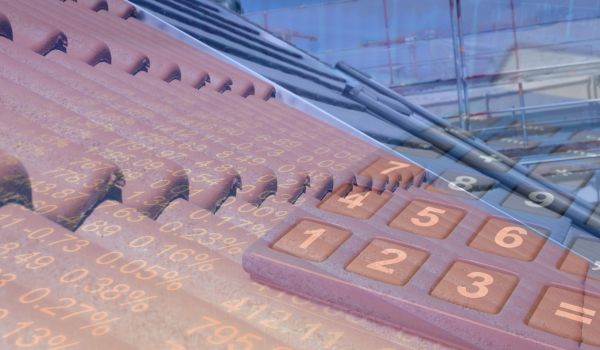

If you're planning a roofing project, whether it's a repair, replacement, or new construction, understanding roof pitch is essential. Roof pitch refers to the steepness or slope of a roof and plays a crucial role in determining the type of materials needed, drainage efficiency, and overall aesthetics. Whether you're getting roofing estimates, choosing the right shingles, or designing a custom roof, knowing how to use a roof pitch calculator can save you time and money.
Many homeowners and contractors need to know how to find the pitch of a roof, yet it can seem more complicated than it actually is. Fortunately, calculating roof pitch is straightforward with the right tools and techniques. In this guide, we?ll break down the concept of roof pitch, explain how to measure it accurately, and show you why it matters in roofing projects.
What Is Roof Pitch?
Roof pitch refers to the angle or steepness of a roof, expressed as a ratio of vertical rise to horizontal run. For example, a roof with a 4:12 pitch means that for every 12 inches of horizontal distance, the roof rises 4 inches. This measurement is critical in selecting materials, estimating costs, and ensuring the roof functions properly in various weather conditions.
The steeper the pitch, the more effectively it sheds water and snow, making it ideal for regions with heavy rainfall or snowfall. Conversely, lower-pitched roofs are more common in warmer climates where water drainage is less of a concern. Understanding how to calculate roof pitch allows you to make informed decisions about roofing design and maintenance.
Why Roof Pitch Matters
The pitch of a roof influences more than just its appearance. It affects material selection, drainage, maintenance requirements, and even energy efficiency.
A high-pitched roof allows for better water and snow runoff, reducing the likelihood of leaks and structural damage. Steeper roofs also offer more attic space, which can improve ventilation and insulation. However, they require more materials and labor, making installation more expensive.
On the other hand, low-pitched roofs are easier to walk on and maintain, but they may require additional waterproofing measures to prevent pooling water. If you?re obtaining roofing estimates, contractors will factor in the pitch to determine labor costs and material requirements.
How to Find the Pitch of a Roof
Finding the pitch of a roof is a simple process that can be done with basic tools. Whether you prefer to measure from inside the attic or on the roof itself, both methods yield accurate results when performed correctly.
Measuring from the Attic
One of the safest and easiest ways to determine roof pitch is from inside your attic. Using a level and a tape measure, follow these steps:
- Place a level against the bottom of a rafter ? Ensure the level extends at least 12 inches from the rafter.
- Mark a point at 12 inches ? Measure 12 inches along the level from where it touches the rafter.
- Measure the vertical rise ? From the 12-inch mark, use a tape measure to determine the distance from the level to the rafter. This measurement represents the rise.
For example, if the rise is 6 inches at the 12-inch mark, the roof has a 6:12 pitch.
Measuring from the Roof Surface
If you?re comfortable working on a roof, you can measure the pitch from the exterior:
- Place a level on the roof surface, extending at least 12 inches.
- Find the 12-inch mark and measure the vertical distance from the roof to the level.
- This measurement indicates the pitch.
Always prioritize safety when measuring on the roof. If you're unsure, hiring a professional with a roof pitch calculator can ensure accuracy without the risk.
Using a Roof Pitch Calculator
A roof pitch calculator simplifies the process, eliminating guesswork and reducing the chance of errors. By inputting your rise and run measurements, the calculator automatically determines the pitch ratio.
These calculators are especially useful when working on roofing projects that require precise measurements.
???Many online tools and smartphone apps provide instant calculations, helping homeowners and contractors get accurate estimates for roofing materials and labor.
If you?re unsure how to calculate roof pitch, using a calculator can save time and ensure precision, particularly when preparing roofing estimates.
Read More: Tips and Strategies to Save Money on Your Roof Replacement in Boise
How Roof Pitch Affects Roofing Materials
The pitch of a roof influences the types of materials that can be used. Different roofing materials are suited for various pitches based on their ability to shed water and withstand wind pressure.
For low-slope roofs (less than 3:12 pitch), materials like rubber membranes, metal panels, and rolled roofing are preferred because they provide better waterproofing. Traditional shingles may not work well on low-pitched roofs since they rely on gravity for proper drainage.
For medium to high-pitched roofs (4:12 and steeper), asphalt shingles, wood shakes, tile, and metal roofing are popular choices. These materials are designed to shed water efficiently and hold up against wind and debris.
????
If you?re planning a new roof, understanding your roof pitch calculator results can help you choose the right materials for durability and performance.
Common Roof Pitch Ratios
Roof pitch is commonly expressed in a rise-over-run format. Some of the most common roof pitches include:
- 3:12 ? A low-slope roof, commonly found on modern homes.
- 4:12 to 6:12 ? A standard residential pitch, balancing aesthetics and function.
- 8:12 and above ? A steep pitch, often seen on Victorian and Tudor-style homes.
If you?re comparing roofing estimates, contractors may refer to these ratios to determine the complexity and cost of installation.
Understanding how to find the pitch of a roof is essential for any homeowner planning repairs, replacements, or new installations. Whether you measure manually or use a roof pitch calculator, knowing your roof?s slope helps determine material options, labor costs, and maintenance requirements.
If you?re unsure about taking measurements yourself, professional roofers can provide precise calculations as part of their roofing estimates. A well-calculated pitch ensures that your roof functions efficiently, lasts longer, and enhances your home?s overall value.
FAQs About Roof Pitch Calculation
1. Why is roof pitch important?
Roof pitch affects drainage, material selection, and construction costs. Steeper roofs shed water better but require more materials and labor, while lower-pitched roofs may need additional waterproofing.
2. Can I measure roof pitch without going on the roof?
Yes, you can measure roof pitch from inside your attic using a level and tape measure. This method is safer and provides accurate results.
3. What is the best pitch for a roof?
The best pitch depends on climate and architectural style. A 4:12 to 6:12 pitch is common for residential homes, while lower pitches work well for modern designs, and steeper pitches add character to traditional homes.
4. How do I use a roof pitch calculator?
Simply enter the rise (vertical height) and run (horizontal distance) into the calculator. It will provide an accurate pitch ratio for your roof.
5. Does roof pitch affect roofing estimates?
Yes, roof pitch impacts labor and material costs. Steeper roofs require more safety measures and materials, making installation more expensive than a low-slope roof.